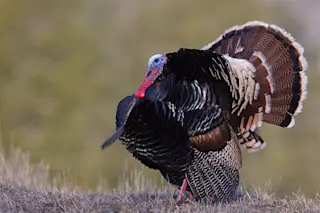Across America, families are likely squirreling away turkeys into chest freezers for Thanksgiving. But earlier this month, Butterball CEO Jay Jandrain warned of a potential shortage of small birds during the holiday season. This threatens the long tradition of Thanksgiving turkey, which has nebulous origins in early colonial New England. Yet Indigenous people’s relationship with the ubiquitous bird goes back more than two thousand years.
In the desert Southwest, the Ancestral Puebloans held a particularly close connection with turkeys. During what archaeologists call the Basketmaker II period, which spanned around 400 B.C.E. to 100 C.E., domesticated turkeys began to appear in Puebloan settlements. They kept the birds not as a food source, but to make use of the plumage: Shaggy blankets made from thousands of turkey feathers woven through a web of yucca fibres guarded against the bitter cold of winter in the high desert.
“I can visualize the blanket-maker ...















